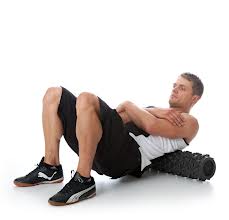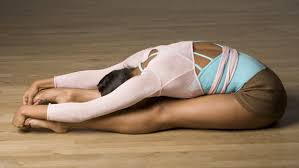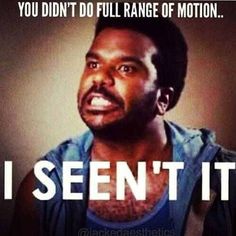Join the tribe of Movement & Calisthenics Athlete - people just like you that are working with their own body weight to get strength, lose fat build muscle, recover from injuries and live their best lives!
It was a few years ago when I entered the gym, more excited than ever to try out my new body weight calisthenics training program. I literally just heard about Convict Conditioning and the power of body weight.
I had been training religiously with weights for more than two years so I was (over)confident that I possessed all of the strength necessary to handle any and all calisthenics that were going to be thrown my way.
Well I was right, in a way.
I DID have a lot of strength, enough to struggle my way through that first day. BUT what I didn’t have was enough flexibility.
As the old saying goes, I was as “stiff as a board” with hamstrings as tight as a drum to go along.
What I had failed to realize is that to truly PERFECT calisthenic exercises, you have to be so much more than just strong. You HAVE to be flexible and able to comfortably move and position your body so that you can use all of that strength in the most efficient ways.
Knowing now that flexibility is the most essential skill to have towards perfecting calisthenics, I have provided you with some of the BEST ways to improve your flexibility and mobility so that YOU can master your calisthenics program!
1) Foam Rolling
At least 5 times a week. For at least 30 minutes.
If you’re not flexible like I was, it takes a slight time commitment. The good news is that foam rolling can be done on your time. It doesn’t have to be at the gym, it can easily be done at home while you’re watching TV relaxing. As seen in the picture, you just use the roller and your body weight to rub out the tension in sore muscle areas.
As I mentioned before in this article regarding the lacrosse ball; there is no wrong way to go about foam rolling. Just find sore areas and roll on them.
In my opinion the best option for foam rolling is a Trigger Point Foam Roller:
Check it on Amazon here Trigger Point Foam Roller
It might hurt a little at first, but over time your soft tissues will begin to loosen up and your muscles will no longer be as tight which obviously leads to increased flexibility.
If it’s not within your budget to go out and purchase a Foam or Rumble Roller, head to your local hardware store and pick up a decent sized piece of PVC Pipe. It will work just as well.
2) Practice Yoga
Seriously, just do it. Forget about how you think it might make you look. EVERYONE should be doing yoga.
Earlier this year I kept experiencing nagging soreness in my hamstrings regardless of how much I warmed up for my training sessions or how much I foam rolled. I would train my legs and then be sore for the rest of the week, just in time for the next leg day.
It wasn’t until I started doing one, one-hour yoga session weekly that I noticed the soreness becoming less and less intense.
Even if you’re only able to make it to one session a week, that’s still much better than avoiding it. Even if you have to skip a normal day of training to make it to yoga, you MUST do it.
Not only will yoga immeasurably increase your flexibility, your mind will be more at peace which will greatly improve ALL areas of your life, most especially your training.
If you’re a guy, stop worrying about what the girls in class are going to think about you, and then ask them out after class!
3) Stretch
DUH!!!
I don’t know how it happened, but somewhere, sometime the “experts” decided that static stretching did nothing for us or was in fact a hindrance to reaching our training (calistenic or otherwise) goals.
Obviously there is a pretty significant correlation or relationship between gymnastics, calisthenics (bodyweight training), dancing , etc. And when it comes to verifying or debunking “rules” shouted out by “experts” , the best way to make a decision is to look at what the professionals do.
Simply look at the picture. I bet she’s more flexible than you or I, and she got that way by STRETCHING! Daily.
There is a very good reason professionals like dancers & martial artists stretch daily. Because it works!
The beauty of calistenic training is that it is so simple. Just you using your bodyweight to get stronger.
Don’t overthink the obvious. If you want to improve your flexibility you must stretch daily.
As with yoga and foam rolling, every little bit helps. If you’re bored at work or home, take 5-10 minutes and stretch your hamstrings, glutes, quads, etc. Every little bit helps.
4) Never Skip Your Warm-Up
If you include things like mobility, foam rolling, or stretching into your regular warm-up, and you never skip the warm-up you’re killing two birds with one stone by consistently working on your flexibility and saving all of that time that you think you don’t have.
Obviously, before doing calishenic work your should NEVER skip your warm-up anyway, but even if you’re pressed for time, and feel the temptation to jump right into your normal training session, DON’T DO IT. Simply cut out some of the volume or work from your training session and save the full warm-up.
5) Always Use Full Range of Motion (ROM)
Lunges suck! They’re hard AND they take longer to complete than most other exercises. For those reasons, you’ll rarely ever see someone actually do them correctly (same for bodyweight squats and many other calistenic moves that involve the legs).
Mostly people sacrifice the movement by doing “half” lunges or “half” squats. By that I mean they fail to use a full range of motion i.e. they don’t go down all of the way.
I’m here to tell you that if you’re serious about increasing your calisthenic skill, you CANNOT sacrifice full range of motion for more “half” reps. If you can only do 5 full ROM lunges, that’s always better than doing 10 “half” reps.
If you’re only doing “half” reps, you’ll never increase (improve) your flexibility, you’re body & central nervous system will never become accustomed to being in positions that are required to complete complex calisthenic movments. Essentially your progress will stall.
No one wants that.
Just by simply making ROM a point of focus in your calisthenic workouts will increase your flexibility without adding any additional time which is always a win-win situation.
Obviously we are all busy.
One of my biggest frustrations with the fitness/exercise industry when I was first starting out was that with all of the information out there, it felt like I could or should always be doing more than I had time for.
I hated that feeling and I don’t want to make you feel like that.
Don’t feel like you won’t be able to make any progress if you can’t or don’t follow every single tip on this list. But if you’re able to add in even just one component to your routine or regimen, your flexibility will be increased, which will help you make the calisthenic progress you desire in no time!




